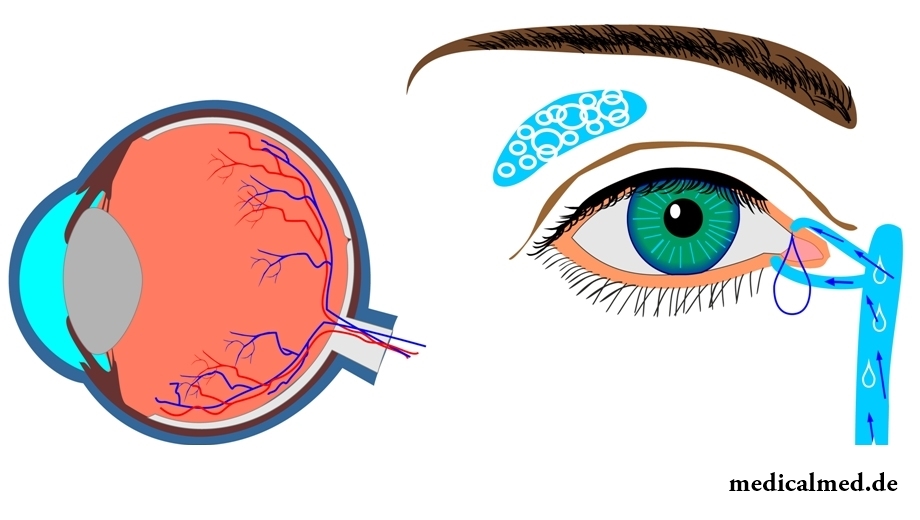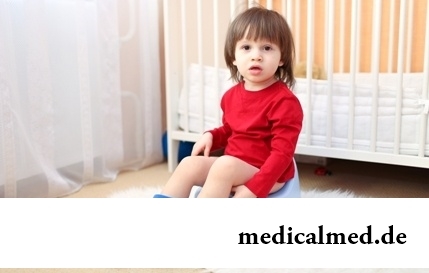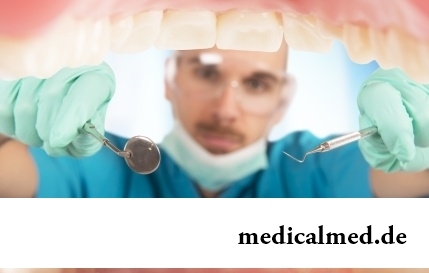





The lacrimal gland
The lacrimal gland is a part of the lacrimal device and allocates a tear in a conjunctive bag which leaves slezootvodyashchy ways.

Structure of the lacrimal gland
The lacrimal gland has a lobular structure and is the tubular gland located in a frontal bone. In this gland from 5 to 10 output channels which pass in a conjunctive bag and allocate tears from a medial corner of a palpebral fissure to the lacrimal lake. The part of canals opens in a temporal part of a conjunctiva, and some channels open about an outside corner of a palpebral fissure in a conjunctive bag.
If eyes of the person are closed, then tears pass on the lacrimal stream in back sides a century. Passing through the lacrimal lake, tears proceed in dot openings at medial edges a century.
The dacryocyst represents an upper channel which is located in a bone pole, about an eye-socket. From walls of this bag bunches of the lacrimal ways which pass through the lacrimal of a tubule begin.
The lacrimal film has three layers – outside, average and horn-shaped (near a cornea). The center the thickest also cosecretes the lacrimal glands.
The lower part of the lacrimal gland is located under an upper eyelid in subaponeurotic space. This lower part consists of 25-30 connecting segments which channels pass in the main gland.
From a conjunctiva of the lacrimal gland a palpebral part which is located in an upper eyelid separates and it can be seen through a conjunctiva.
Functions of the lacrimal gland
The lacrimal gland performs several main protective and nutritious functions:
- tears promote intake of useful substances in a cornea;
- tears clear an eye of foreign objects, dust and various pollution;
- tears help to eliminate "a syndrome of dry eyes" which arises from tension of eyes, fatigue and strong visual loadings;
- useful substances – potassium, chlorine, organic acids, proteins and carbohydrates, lipids and a lysozyme are a part of the lacrimal liquid.
Often tears are manifestation of positive or negative emotions, but their allocation always exerts positive impact on the general emotional and mental condition of the person.
Anomalies in development of the lacrimal gland
Pre-natal injuries are the main reason for anomalies of slezootvodyashchy system. Often the ophthalmologist at survey of an eye of the baby can find several lacrimal openings on a lower eyelid which open as a tubule and a dacryocyst. One more most widespread anomaly is the shift of the lacrimal openings and obstruction of the lacrimal gland.
Such congenital anomalies demand holding special ophthalmologic procedures. At emergence of impassability of the nasolacrimal channel at newborns it is better not to perform operations as within several weeks there is its spontaneous opening.
There are several types of an arrangement of the nasolacrimal channel at anomalies of its development. Options of an arrangement depend on type of the lacrimal channel, changes of a wall of a nose and the nasal course.
Diseases of the lacrimal gland
Diseases of the lacrimal gland can cause damages to the lacrimal device, including output channels and slezootvodyashchy ways.
Treat such diseases:
- the dacryadenitis is an inflammation of the lacrimal gland;
- the epiphora represents excessive or insufficient release of the lacrimal liquid;
- the dacryostenosis leads to obstruction of the lacrimal gland and an inflammation of slezootvodyashchy ways.
Inborn pathologies, inflammatory and infectious diseases, injuries and tumors are the reasons of diseases.
The inflammation of the lacrimal gland develops against the background of a partita or other infectious disease, including pneumonia, flu, typhus and scarlet fever. The inflammation of the lacrimal gland in a severe form is caused by blood diseases, syphilis and tuberculosis. Symptoms of an inflammation are the increased body temperature, a headache, weakness, a swelling of a century, an inflammation of a mucous membrane of an eye.
At obstruction of the lacrimal gland lymphatic bonds increase, and pain becomes acute and extends to whisky. Antibiotics, aminoglycosides and analgetics are a part of drug treatment of the lacrimal gland. At severe hypostases antiallergic drugs (tavegil, cythrene, etc.) are appointed.
At long narrowing of the lacrimal channel there can be a protrusion of an upper corner of a palpebral fissure and developing of dropsy of an eye bag. Therefore process of non-invasive treatment of the lacrimal gland should not be dragged out if it does not yield essential result. The delay in carrying out operation can lead to serious complications.
Inborn diseases of the lacrimal gland are the hypoplasia, an aplasia and a hypertrophy. These diseases can be caused by anomalies of development, infectious diseases and damages of nerves.
The main to diseases of slezootvodyashchy ways is the dacryocystitis and a canaliculitis. The dacryocystitis occurs at newborns and represents a dacryocyst inflammation. In the presence of these diseases to recover normal functioning of the lacrimal device, operational treatment of the lacrimal gland and slezootvodyashchy ways is carried out.
Average life expectancy of lefthanders is less, than right-handed persons.

It is pleasant to state a possibility of improvement of quality of life of people with problems of functioning of secretory system. By efforts that...
Section: Articles about health
All parents are ready to what the baby often and pisat much. Since then, as the absorbing diapers strongly became current, keeping of the kid in dryness does not represent any problems. But if the grown-up kid continues to urinate in panties, parents of a nacha...
Section: Articles about health
The cosmetics intended for improvement of a condition of skin, nails and hair are used by each woman. Expenses on regular acquisition of the fashionable widely advertized products of well-known companies for many become very notable and significantly burden the family budget. Meanwhile, there is a number of inexpensive pharmaceutical drugs which can quite be applied in the cosmetic purposes. At the same time the effect of their use is often more noticeable, than result of use of the most expensive...
Section: Articles about health
Almost each of us during life faced dissatisfaction with own body. At such moments, as a rule, we beginning...
Section: Articles about health
It would seem, to buy drugs in Moscow does not make a problem – a drugstore, and not one, is available for each resident of the capital within walking distance. And, nevertheless, Internet drugstores become more popular – what it is possible to explain such phenomenon with? Actually m reasons...
Section: Articles about health
The popular expression "run from a heart attack" became the motto of the people supporting active lifestyle. Moreover, run became a peculiar fashionable tendency: sales of racetracks and the accompanying goods for run are at permanently high level. Whether really it is possible for one and all people and it is necessary to run to receive the portion of health, a charge of cheerfulness and good mood?...
Section: Articles about health
Statistically cystitis 25-30% of women up to 40 years have. With age this indicator raises, besides many do not get in to become...
Section: Articles about health
On the head of the person about one million hair follicles, or as they are called still, hair bulbs are located. At the time of the birth most of them is in the "sleeping" state, but within several weeks follicles become more active, and from them begin р...
Section: Articles about health
Statistically, in Russia about 34% of citizens smoke. Most of consumers of tobacco has problems with health sooner or later. Not only smokers, but also their relatives suffer. Besides, cigarettes are expensive, and need of their acquisition goes a heavy burden on the budget of thousands of Russian families. Many people dream to refuse harmful tendency, but everyone manages to make it not: nicotine addiction is affectionate and to get rid of it not easy....
Section: Articles about health
Several decades ago the basil (the district khan, реан, Reagan) was considered as a part of the Caucasian or east cuisine, but today it is strong for...
Section: Articles about health
Separate food - the system of meal based on digestion physiology which is carried to improvement methods. According to nutritionists, the separate use of the carbohydrate and proteinaceous products demanding different conditions of assimilation helps to get rid from Bol...
Section: Articles about health
One of the major chemical processes happening in a human body are oxidation reactions. They go with participation of fats and carbohydrates which we receive from food, and the oxygen getting to us from air. A main goal of such reactions is obtaining the energy necessary for life activity. Unfortunately, as a result of these processes dangerous by-products – so-called free radicals are allocated. To minimize harm which they can cause to the person neo...
Section: Articles about health
White teeth and the Hollywood smile – a dream of many people. Long time was considered that a plaque on teeth and change of their color – destiny of those...
Section: Articles about health
So, you resolved to lose weight. And now you try to understand what to begin with: from exercise stresses or a diet? And how to make that process of weight loss did not give you an inconvenience, and, on the contrary, brought joy?...
Section: Slideshow
Condition of lips (their morbidity, outward) – one of indicators of health of the person. The peeling, dryness, pallor, and also cracks in corners of a mouth can be not only the cosmetic shortcoming which arose owing to physical damages and weather conditions but also the satellite of some diseases and disturbances in an organism needing treatment. Let's consider 10 possible reasons of emergence of angular cracks (perleches) in corners of a mouth and ways of their elimination....
Section: Articles about health
Epilepsy is one of widespread neurologic diseases. To parents, whose children suffer from this illness, it is necessary...
Section: Articles about health
Dietary supplements (dietary supplements) for the last decades were so thoroughly included into our life that, apparently, it is already impossible to find the person who at least once did not try them. At the same time, most of our compatriots have a vague idea about...
Section: Articles about health
The trophic ulcer is not an independent disease. This heavy complication arising owing to a thermal injury (a burn or a frostbite), chronic pathologies of arteries or veins of the lower extremities, a diabetes mellitus, and also some defeats of connecting fabric, absorbent vessels, skin or nervous trunks. Pathology is shown in the form of not healing wound located on the internal surface of a shin, a foot sole, a heel or toes....
Section: Articles about health
Iodine - one of thirty most important microelements in our organism. The main role of iodine consists in synthesis thyroid гормо...
Section: Articles about health
Hemorrhoids – extremely widespread disease. Periodically arising inflammations and bleeding of hemorrhoidal nodes cause serious discomfort to nearly fifteen percent of adults. Meanwhile, having a clear idea of the aggravation reasons...
Section: Articles about health
Visit of doctors – business not the most pleasant, and many people do not hurry to undergo necessary planned inspections. Such behavior is extremely thoughtless and improvident. Our health is necessary not only to us: wellbeing of darlings, children, grandsons and aged parents directly depends on as far as we are vigorous and able-bodied. Therefore in time to be inspected – a duty of any modern person. Specialists consider that 7 regular surveys and di are especially necessary for women...
Section: Articles about health
Kidneys perform the most important function of clarification of blood from those products of metabolic processes which cannot be used орг...
Section: Articles about health
All of us, unfortunately, should face flu nearly an every year. It would seem, so frequent disease has to be studied already up and down, and each person, at least once by it had (and the number of such people in our country aims at 100%), a dolzha...
Section: Articles about health
Reactive pancreatitis - the disease which is characterized by inflammatory process in a pancreas which arises most often because of excess activity of digestive enzymes. It − the emergency state which treatment has to take place in surgical department under control of doctors. The acute inflammation of gland can become the reason of its transition to a chronic form, and also development is purulent - necrotic pancreatitis which the extensive necrosis of fabrics can follow. Zabolev...
Section: Articles about health
The thought that the mass of their body is too big at least once in life visits from 80 to 95% of women. Many...
Section: Articles about health
Subfebrile temperature call fervescence to 38 degrees, and subfebrile condition - existence of such temperature over 3 days, and quite often it happens without the visible reasons. Existence of subfebrile condition - a strong indication of disturbances in an organism which can...
Section: Articles about health
People know that thermal sources have salutary force long ago. Treatment by natural waters is one of the most ancient methods of disposal of the most different diseases. Bathtubs, souls, wrappings and inhalations, in combination with water reception inside help to improve a condition of the patients suffering from disturbances of work of a musculoskeletal system, bodies of digestive tract, cardiovascular, nervous, respiratory and secretory system, skin and endocrine п...
Section: Articles about health
